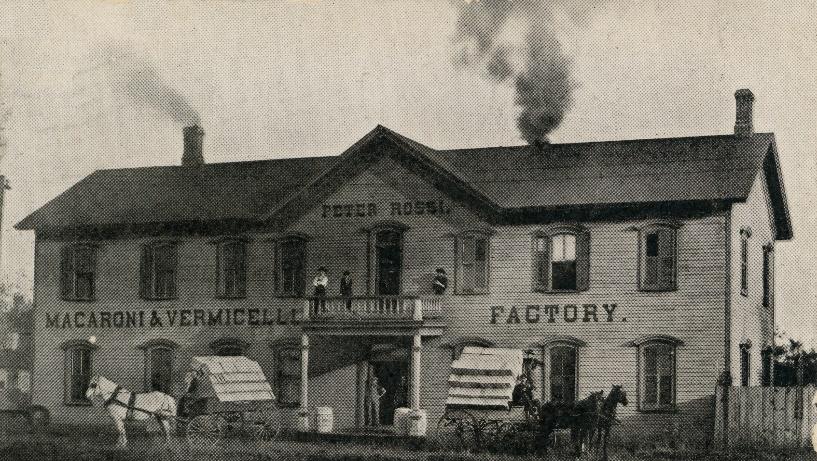
3 minute read
Rossi Macaroni
Pioneer Macaroni Man: Peter Rossi, and the Rossi Macaroni Factory
By Leonard J. DeFrancisci, May 25, 2020
Advertisement
As a young man, Peter Rossi Sr. cut his teeth in the macaroni industry while working as a specialist in grain milling and macaroni manufacturing with the Italian Government. In 1876, he put his experiences to good use and opened a macaroni factory in his hometown near Torino. Two years later, he immigrated to the United States and settled in the mining town of Braidwood, Illinois, but soon moved to Chicago to work as a pastaio for a macaroni factory. Shortly afterwards, he moved back to Braidwood and opened a tin shop and hardware store. In 1886, he pursued his calling as a macaroni man, and opened the Peter Rossi Macaroni factory on Fourth Street, east of Division, becoming one of the first commercial producers of pasta in the region outside of Chicago.
With steady growth, the company needed to expand, so Rossi acquired the Broadbent Hotel on First Street in 1898, and converted it into a pasta factory. Initially, a blind horse traveling in a circle around a capstan powered the production equipment, but steam and gas eventually provided the “horse power” as these technologies came on line. With the introduction of modern equipment, the company made 5,000,000 pounds of pasta per year by the late 1950s. The location of the factory near the Alton Depot train station provided advantages in receiving raw materials, and shipping final goods to customers, mostly in the North Central and Mississippi Valley States. With an eye towards making quality products, Rossi used his experiences from Italy to make pasta from semolina, one of the first to do so in the United States.
Peter Rossi died in 1918 and his sons Felix, Henry Sr., Peter J. and Stephen continued running the company. Eventually, Henry Sr. took over the business with his sons Henry Jr. and Albert. The family sold the business in 1969.
The Rossi family were active in their communities and promoting the industry. 1890–92, Peter Rossi served as an alderman in the Braidwood City Council. For many years, the Rossi family was involved with the National Macaroni Manufacturers Association (now the National Pasta Association), one of the oldest trade organizations in the United States. The Rossi Macaroni Company was a charter member, and Henry Rossi served as a director. During World War I, the pasta industry saw significant growth, as well as more regulations resulting from the war. To help address these issues, the association decided to add a secretary-treasurer in 1919, and hired M. J. Donna of Braidwood for the job based on the recommendation of Henry Rossi. Donna became the foundation editor of The New Macaroni Journal, with the first issue appearing in May 1919. Also, the National Macaroni Manufacturers Association, the Macaroni Journal and the National Macaroni Institute were all headquartered in Braidwood, making it known as, “The Little Macaroni Capital.” 1911–19, Rossi sponsored an amateur baseball team named after his brand, The Lincoln Macs, which achieved success on the local circuit.
In 1919, with prohibition looming large on the horizon, the Fortune Bros. Brewing Company of Chicago took steps to diversify (18th Amendment of the Constitution went into effect in 1920, which banned the manufacture and sale of alcohol for consumption). They hired Peter J. Rossi, formerly from Peter Rossi and Sons and the International Macaroni Company of Joliet, Illinois, to lead the repurposed factory.
Peter Rossi was a trailblazer in the macaroni industry. His story reflects the success of many Italians who came to America, bringing with them new ideas and technologies that would forever shape the food industry.
See full story for citations. Photograph: Webster S. & S. Post Card Co., Braidwood, Illinois circa 1905.

